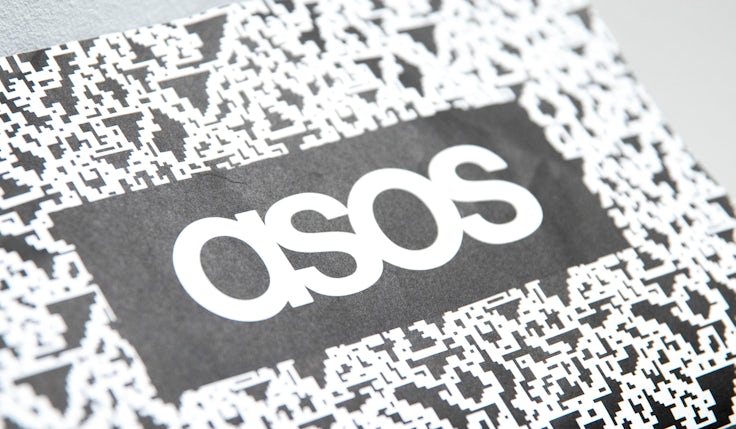Asos chases improved marketing ROI amid profitability ‘obsession’
With UK sales down 8%, the ecommerce giant says it is “optimising marketing spend” and culling unprofitable brands in a bid to make £300m in savings.
 Asos claims to be “optimising marketing spend” and reallocating investment to improve ROI, as the ecommerce giant ramps up its “obsession” with profitability.
Asos claims to be “optimising marketing spend” and reallocating investment to improve ROI, as the ecommerce giant ramps up its “obsession” with profitability.
Speaking on a call with analysts this morning (12 January), CEO José Antonio Ramos Calamonte insisted the retailer is focused on its profitability agenda despite the macroeconomic volatility. This “vulnerability” is most pronounced in the UK, where sales fell 8% to £591.3m in the four months to 31 December 2022.
“We see the markets are very volatile. Our expectation is that they will continue to be very volatile. This vulnerability has been bigger in the UK. What we are expecting is this will continue for the rest of the year,” he explained.
Asos pointed to weak consumer sentiment in the UK market, impacted by events such as the Queen’s passing in September, the mini-budget from former Prime Minister Liz Truss and disruptions to deliveries in December.
I keep on referring to this agenda to be able to deliver the level of profitability we want. That is our obsession and where we’re focusing a lot of the effort.
José Antonio Ramos Calamonte, Asos
Disruption resulted in earlier cut-off dates for Christmas and New Year deliveries, which prompted Asos to reduce marketing spend in response. The UK sales figures are also impacted by comparisons to a stronger period for sales in December 2021, when the Omicron variant boosted online retail.
“The delivery disruptions seem to be easing, but they are not entirely over. I don’t think that’s an end to the volatility, so that’s why we’re preparing the company,” Calamonte explained.
“I keep on referring to this agenda to be able to deliver the level of profitability we want. That is our obsession and where we’re focusing a lot of the effort. We are seeing that we are building our share in the first weeks of the year and that is important for us. It means our competitive approach is delivering for consumers, but the evolution of the market is going to be uncertain and vulnerability is going to be here for longer.”
Despite the difficulties in the UK market, EU sales grew 6% to £417.3m, supported by price increases and customer growth, with the Netherlands and Ireland performing particularly strongly. US sales were, however, down 2% to £198.1m, due in part to weaker wholesale performance.
Rest of the world sales fell 10% to £129.8m, which Asos attributes to “strategic measures” such as a reduction in performance marketing spend to optimise return on investment, as well as changes to delivery thresholds and charges. Overall, group revenue fell 6% to £1.34bn in the four months to 31 December, while active customers remained flat at 25.5 million.
Asos CEO blames acquisition slowdown on ‘insufficient’ brand spend
Addressing the progress of its ‘Driving Change’ agenda, Asos confirmed its intention to make £300m in savings this year, news which saw the retailer’s shares surge by 13%.
This package of “profit optimisation and cost mitigation measures” includes optimising marketing spend and reallocating investment to drive improved ROI. The retailer also plans to cut 35 “unprofitable brands” from its platform by the end of the first half of its 2023 fiscal year.
The Asos CEO told analysts the business has applied a “brand lens” to decisions around which brands to support, in which locations.
“Some brands are profitable in some geographies and not some other geographies, so we have stopped selling some brands in some geographies and have completely stopped selling some brands,” he explained.
“We have also applied that lens to our promotional efforts and this is important, because when you put the three axes together it could be that certain brands in certain locations are not promoted anymore, or certain brands are not promoted anymore. We are trying to focus on offering relevant stock levels, so that it can be sold at full price and in some cases we might have been over promoting and that was damaging our gross margin.”
Back in October, Calamonte blamed “insufficient” brand investment and an over-reliance on promotions for a slowdown in customer acquisition. At the time, he confirmed more than 80% of the company’s marketing investment had focused on performance marketing, “leaving insufficient spend” for driving longer-term brand awareness.
In a bid to bolster its marketing expertise, last month Asos appointed Google global vice-president of ads marketing Marie Gulin-Merle as a non-executive director. Joining the board on 1 February, the former Calvin Klein and L’Oréal CMO was recruited for her knowledge of international ecommerce, marketing, beauty and brands, according to Asos chairman Jørgen Lindemann.
Question of pricing
Over the four months to 31 December, Asos experienced growth in its full-price sales mix resulting from a shift in its approach to clearance, as the retailer implemented deeper discounts on a narrower range of products. Sales of formalwear, trainers and outerwear are said to have performed “very well” over the period.
In reaction to rising inflation, Asos implemented low-single digit price increases across its own brand products.
“The priority is to protect our consumers and to offer them the best possible fashion at the best possible price. Pricing is always something we treat with tender love and care. We also approach pricing in a competitive way,” said Calamonte.
“We don’t follow a ‘cost plus’ model where we take inflation and we pass it to consumers. We make sure our products are competitive in the market. We’re now seeing movements in the market and we move along with the markets. This low single digit price increase is in line with what we’ve seen in the UK.”
Pricing is always something we treat with tender love and care. We also approach pricing in a competitive way.
José Antonio Ramos Calamonte, Asos
When it comes to the wider Driving Change agenda, Asos claims to have made “meaningful progress” towards embedding a “reinvigorated culture” focused on “simplicity, transparency, operational effectiveness and innovation”. The retailer does, however, intend to reduce staff costs by 10%, having previously confirmed in October plans to slash 100 head office roles.
Despite the cost cutting measures, Asos still expects to make a loss during the first half of its 2023 fiscal year, due in part to issues around inflation and elevated return rates. With returns still above pre-pandemic levels, Calamonte noted a trend emerging from April last year onwards, which he attributed to the onset of the war in Ukraine and cost of living crisis.
While the Asos boss acknowledged “some demand weakening and softer performance in some smaller geographies” due to price changes for its Premier membership, he said it was difficult to determine if this was caused by the pricing decisions or the wider cost crisis.
In April last year, Asos announced Premier customers would need to spend a minimum of £10 per order to qualify for free next day or nominated day delivery.
Despite the issues, Calamonte believes the business is “undertaking necessary strategic and operational changes”, shifting the focus from top-line growth to building a “more relevant and competitive fashion business with a disciplined approach” to capital allocation and ROI.






Comments